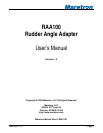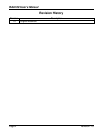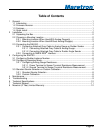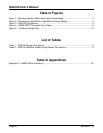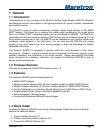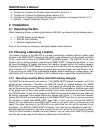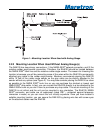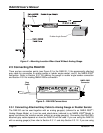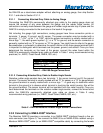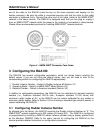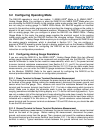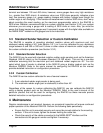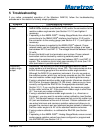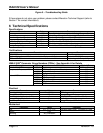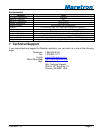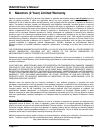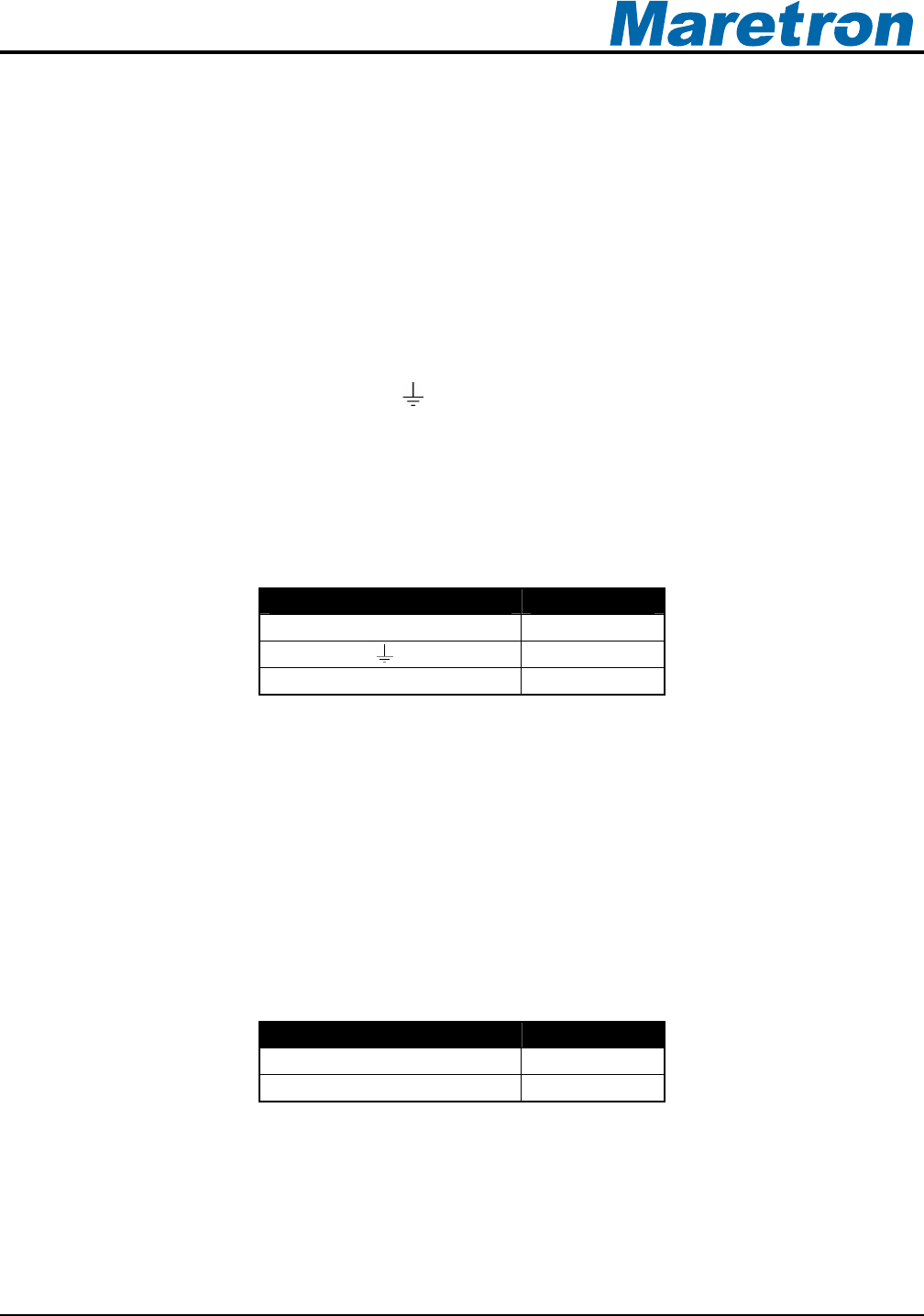
®®
Revision 1.0 Page 5
the RAA100 as a stand-alone adapter without attaching an analog gauge, then skip Section
2.3.1.1 and refer to Section 2.3.1.2.
2.3.1.1 Connecting Attached Gray Cable to Analog Gauge
Connecting the RAA100’s permanently attached gray cable to the analog gauge does not
require the removal of any wires between the gauge and the rudder angle sender. All
connections normally made between the gauge and rudder angle sender stay in place and the
RAA100 is simply connected to the terminals on the back of the gauge.
Not including the gauge light connections, analog gauges have three connection points or
terminals: 1) power, 2) ground, and 3) sensor. The power connection may be marked with a
plus sign “+”,“+12V”, or an “I” or “IGN”, while the ground connection is usually marked with a
minus sign “-“, the earth ground symbol “ ”, or a “G” for ground, and the sensor connection is
generally marked with an “S” for sensor or “G” for gauge. You might have to refer to the gauge
documentation or schematic to determine the exact function of the three gauge terminals but it
is important to distinguish which terminals are the power, ground, and sensor. Once you have
determined the terminals on the back of the gauge, connect the wires found within the
RAA100’s permanently attached gray cable as shown in Table 1 using recommended wiring
practices (i.e., ABYC, Coast Guard, NMEA, ISO, etc.).
Gauge Terminals Wire Color
Power (+, +12V, I, IGN) Red
Ground (-, , G) Black
Sensor (S, G) Green
Table 1 – RAA100 Gauge Connections
2.3.1.2 Connecting Attached Gray Cable to Rudder Angle Sender
Resistive rudder angle senders have two terminals; 1) the sensor terminal and 2) the ground
terminal. The sensor terminal is usually marked with an “S” for sensor or a “G” for gauge where
the ground terminal is usually marked with a minus sign “-“. A good way to determine which
terminal is the ground is to observe which terminal is touching the metal housing; this will be
the ground terminal. The sensor terminal will be insulated from the metal housing. Once you
have determined the terminals on the resistive rudder angle sender, connect the wires found
within the RAA100’s permanently attached gray cable as shown in Table 2 using
recommended wiring practices (i.e., ABYC, Coast Guard, NMEA, ISO, etc.).
Sender Terminals Wire Color
Sensor (S, G) White
Ground (-) Black
Table 2 – RAA100 Resistive Rudder Angle Sender Connections
2.3.2 Connecting to NMEA 2000
®
Interface
The Maretron RAA100 provides a connection to an NMEA 2000
®
interface through a five pin
male connector (see Figure 4). You connect the RAA100 to an NMEA 2000
®
network using a
Maretron NMEA 2000
®
cable (or an NMEA 2000
®
compatible cable) by connecting the female



